Abstract
In Japanese agriculture, data on leafy vegetables, particularly turnips, a representative autumn-winter vegetable, shows that the national harvest volume in 2022 will be 587kt, with a cultivated area of 11.8kha and the highest shipping volume in Ibaraki at 180kt. These figures indicate that turnip cultivation in Japan is carried out on a certain scale, with Ibaraki being its center. The high turnip production volume nationwide suggests that Japanese farmers are cultivating turnips over a wide area to meet autumn and winter demand. It also shows that there is high demand for turnips. These data indicate the importance of leafy vegetables in Japanese agriculture and suggest that turnip production, in particular, tends to be concentrated in certain regions.
Autumn/winter cabbage harvest volume (main data).
The yield of Chinese cabbage, a leafy vegetable crop in Japanese agriculture, peaked at 1.51 Mt in 1973 and has been declining since then. The 2022 harvest will be 38.8% of the peak. This trend is thought to be influenced by changes in demand due to structural changes in agriculture and changes in food culture. For example, factors include an increase in demand for Western vegetables and a decrease in the agricultural labor force. However, Chinese cabbage is an important ingredient in the Japanese diet, and demand for it will not disappear completely. Farmers will be required to adapt their cultivation to changing demand and adopt diverse strategies. In addition, although the yield is on a downward trend, it still maintains a certain level, indicating that it plays an important role in Japan’s agriculture. In the future, new developments in leafy vegetable cultivation are expected to emerge due to changes in demand and advances in agricultural technology.


The maximum is 1.51Mt[1973] of Japan, and the current value is about 38.8%
Autumn/winter cabbage harvest volume (by prefecture).
In agriculture in Japan, as of 2022, Ibaraki recorded the highest overall yield of 195kt, which is the highest overall. Ibaraki’s position as the largest suggests that the region occupies a central position in the production of leafy vegetables. It also reflects the high demand for leafy vegetables, which may mean that a certain amount of harvest is being secured in areas other than Ibaraki. This data shows that there are regional biases in the cultivation of leafy vegetables across Japan, and provides important information for understanding the productivity and agricultural characteristics of each region. In the future, careful attention will be required as changes in demand and climatic conditions may affect the production volume of leafy vegetables in each region.
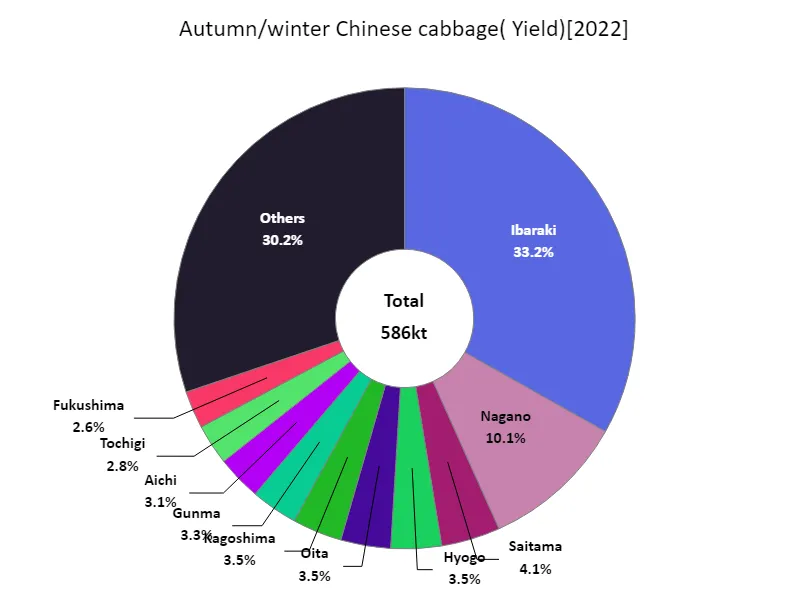

The maximum is 195kt of Ibaraki, the average is 12.5kt, and the total is 586kt
Area planted with cabbage in autumn and winter (main data).
In Japanese agriculture, the area cultivated for autumn/winter Chinese cabbage, a leafy vegetable, peaked at 39.2 kha nationwide in 1973 and has been declining since then. As of 2022, the area under cultivation is 30.1% of its peak. This trend is thought to be influenced by changes in the structure of agriculture and changes in consumer eating habits. For example, the diversification of diets in recent years and increased demand for Western vegetables may be contributing to the decline in the area cultivated with Chinese cabbage. On the other hand, technological innovations in agriculture and improvements in production efficiency have made it possible to plant crops more efficiently, potentially ensuring a certain supply even while reducing the production area compared to past peaks. Additionally, the urbanization of farmland and the decline in the labor force due to an aging population may also be contributing to the decline in cultivated area. In the future, sustainable management of the cultivation area of leafy vegetables will be required through efficient cultivation methods and the creation of new demand, while taking into account the balance between supply and demand.
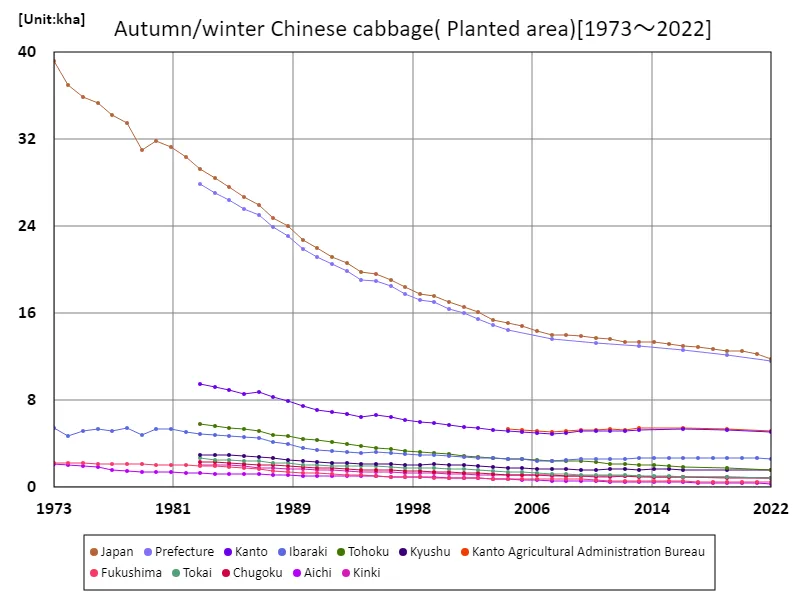

The maximum is 39.2kha[1973] of Japan, and the current value is about 30.1%
Areas planted with autumn-winter cabbage (by prefecture).
In Japan’s agriculture, data on the area planted with leafy vegetables as of 2022 shows that Ibaraki has the highest total area, at 2.6 kha. Ibaraki’s position as the largest suggests that the region plays a central role in the cultivation of leafy vegetables. In addition, the cultivation of leafy vegetables is influenced by the climatic conditions and land suitability of each region, so the fact that Ibaraki is the largest may mean that the region is blessed with these conditions. Furthermore, other prefectures have also secured a certain amount of cultivated area, which indicates that the cultivation of leafy vegetables is widespread throughout Japan. However, in areas outside Ibaraki, leafy vegetable cultivation is carried out, albeit on a small scale, demonstrating regional diversity. In the future, changes in demand and fluctuations in climatic conditions are likely to affect the cultivated area of leafy vegetable crops in each region, so it will be important to introduce appropriate agricultural policies and technologies that take into account the characteristics of each region.
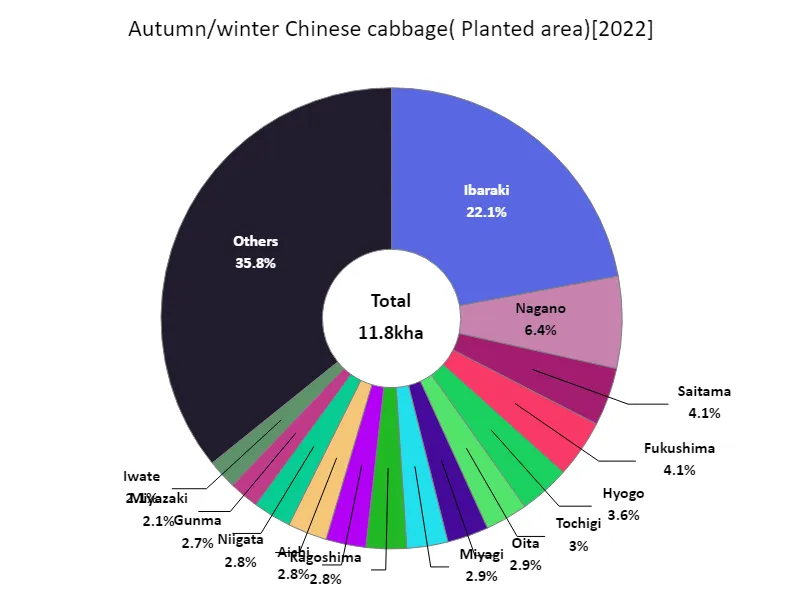

The maximum is 2.6kha of Ibaraki, the average is 251ha, and the total is 11.8kha
Cabbage shipment volume in autumn and winter.
As of 2022, Ibaraki recorded the highest overall shipment volume of 180kt for autumn and winter cabbage, a leafy vegetable crop in Japanese agriculture. The overall average shipment was 9.94kt, for a total of 467kt. Ibaraki’s distinction as the largest suggests that the region plays a central role in cabbage production. Additionally, the average and total shipping volumes show that shipments of cabbage across Japan are maintaining a constant volume. Leafy vegetables have high seasonal demand and, as they are grown in the autumn and winter, shipping volumes tend to be concentrated during those seasons. Since a certain amount of shipments are being made to areas other than Ibaraki, it is clear that a production system is in place to meet regional demand. This data shows the importance of leafy vegetable production and supply in Japan, and suggests that cultivation and shipping plans suited to regional characteristics and demand are important. In the future, it will be necessary to establish efficient production and supply systems that can respond to changes in demand and fluctuating weather conditions.
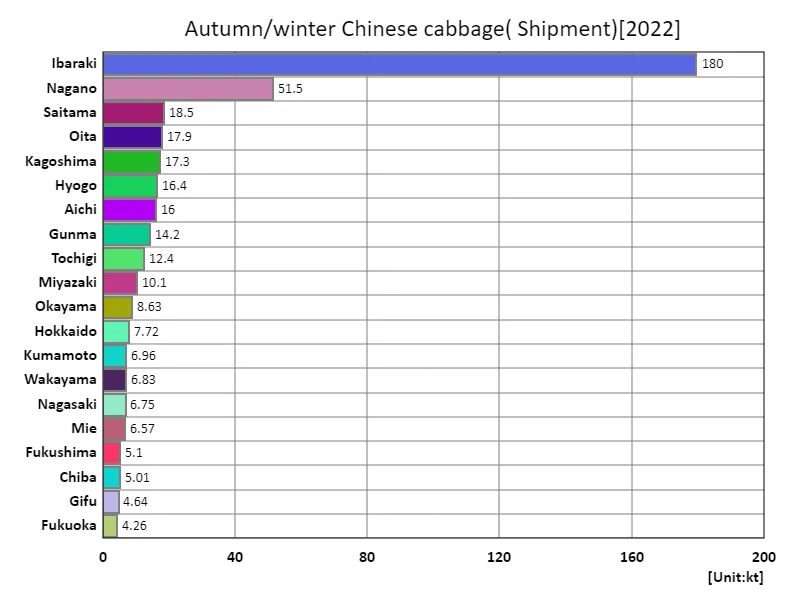

The maximum is 180kt of Ibaraki, the average is 9.94kt, and the total is 467kt
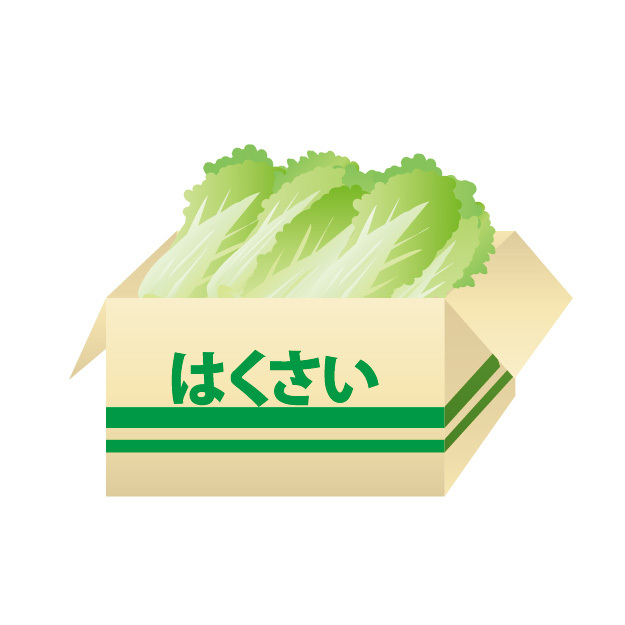


Comments